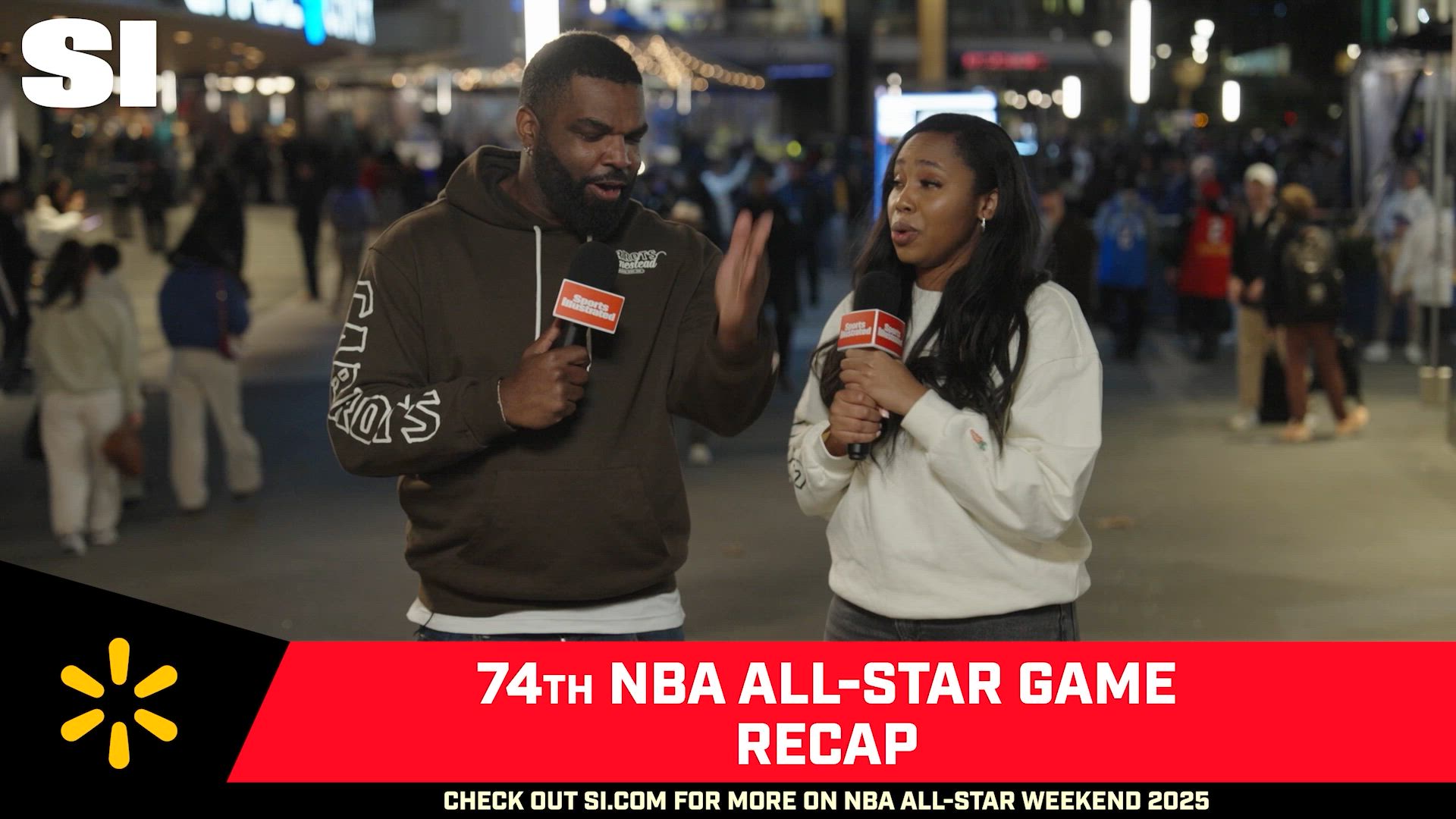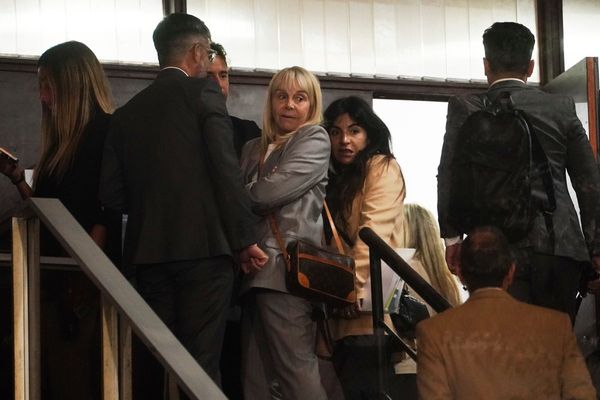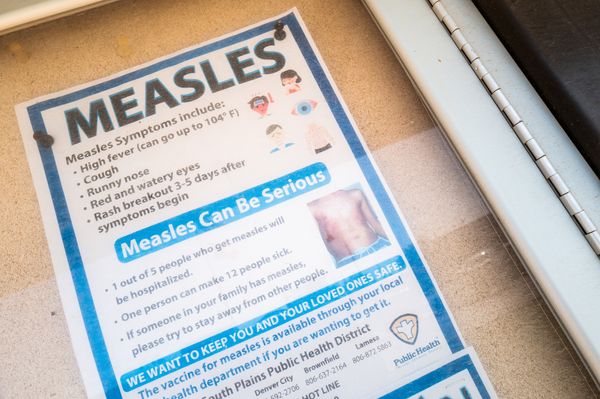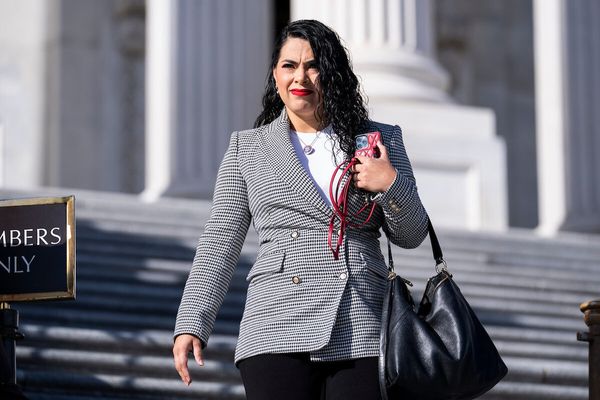
Few players have been on the receiving end of the NBA office’s wrath more than Draymond Green, who has spent the formative years of his career racking up fines and suspensions in staggering numbers. So perhaps it was fitting that during the league’s marquee midseason event—and with the NBA in need of some positivity to curb the conversation around flagging ratings and its polarizing style of play—Green was there to slap the powers that be around.
He called the All-Star Game game “boring.” He said it lacked substance. On Sunday, seated at the pregame desk of league partner TNT, Green excoriated the NBA’s new All-Star format, a four-team mini-tournament that featured a team from the Rising Stars competition.
Draymond Green: "You work all year to be an All-Star and you get to play up to 40 and then you're done... Come on, what are we doing? This is ridiculous."
— Awful Announcing (@awfulannouncing) February 17, 2025
Adam Lefkoe: "Scale of 1-10, your thoughts of the format."
Draymond: "A zero. Sucks. This ain't basketball." #NBA pic.twitter.com/L7dlhwLprm
“I had to work so hard to play on Sunday night of All-Star weekend,” the Golden State Warriors star said. “And because the ratings are down and the game is bad, we’re bringing in Rising Stars. That’s not a fix.”
Asked to rate the format on a scale of one to 10, Green deadpanned, “Zero.”

Criticizing the NBA’s All-Star weekend is easy. It’s the punditry equivalent of shooting fish in a barrel. For years the game has devolved into a glorified pickup game, bottoming out last season with a lifeless 211–186 train wreck that enraged officials from Adam Silver on down. A shorter (games were played to 40), tournament-style format (the league loves tournaments), officials reasoned, could trigger better play.
And it did. Sort of. While the action was slightly more competitive, any gains made on the floor were erased by long, momentum-killing intermissions. Musical acts, acrobats, a shooting contest hosted by YouTuber Mr. Beast. At one point, TNT, which will lose its broadcast rights after this season, held a five-minute ceremony in the middle of the final honoring the end of Inside the NBA … a show that will air in the same form next season on ESPN.
Said the Oklahoma City Thunder’s Shai Gilgeous-Alexander, “The breaks, I guess, weren’t ideal.”
Whatever. Larry Merchant, the Hall of Fame journalist, once said of boxing, “nothing can kill [it] and nothing will save it.” The same holds true for the All-Star Game. Last year’s game drew 5.5 million viewers, a small number by, say, NFL standards, but better than any NBA regular-season game. This year’s contest will likely do a comparable number, meaning any #EndNBAAllStar campaigns will go unheard. Meanwhile, league officials will probably pounce on the fact that players did play harder, with some even liking the changes.
The BEST PLAYS from Shaq's OGs on way to winning the first-ever #NBAAllStar mini-tournament 🔥 pic.twitter.com/XvGTKGIPwo
— NBA (@NBA) February 17, 2025
“I think it’s interesting, it’s different,” New York Knicks point guard Jalen Brunson said. “The games are kind of short. I mean, I like the format. It’s something new, something unique. Maybe just make it score to 50.”
Said Gilgeous-Alexander, “I feel like it was a little bit more towards the competitive side, which is a good feeling. A step in the right direction.”
Some other notes after a busy week in San Francisco …
Luka Doncic Trade Still Lingers
On Sunday, at his annual All-Star news conference, Silver was asked about a situation he has absolutely nothing to do with. Specifically, the Dallas Mavericks’ decision to trade Luka Doncic to the Los Angeles Lakers for a package headlined by Anthony Davis. “I was surprised when I heard about the trade,” Silver said. “I did not know that Luka was potentially a player that was about to be traded. That was news to me.”
Indeed, Ping-Pong between agency parties and NBA-sponsored events and you will find that everyone still wants to talk about Doncic. What I found interesting, though, was how many made arguments in favor of Mavs general manager Nico Harrison—or at least claimed to understand what he was doing.
None of the people I chatted with—a group that ranged from agents to team and league execs—was willing to say they would have done the same deal. But several said they respected the, er, huevos it took for Harrison to execute that kind of deal. And said they could see the vision. A front line anchored by Davis, Dereck Lively II and Daniel Gafford is a defensive nightmare, and Kyrie Irving has proven he can be a backcourt offensive anchor.
“That game they played against Houston,” said a rival team exec, referencing Dallas’s 11-point win over the Rockets in Davis’s debut, “was scary. That’s a team that, if healthy, can beat anyone in the conference.”
The if healthy, of course, is doing a lot of work there. The Mavs’ frontcourt has been decimated. Davis is out for the next few weeks (at least) with an adductor strain. Lively is gone for the next couple of months, while Gafford is expected to miss six weeks with a knee injury. Dallas has won four of its last five, but has been burning out Irving at 40-plus minutes per game in all but one of them, even as he is dealing with his own bumps and bruises.
History will judge Dallas’s decision, but the Mavericks have opened an interesting three-year window. If Davis can stay healthy—and we can throw out the “he’s been healthy for two straight seasons” stuff now that this one has been derailed—and if Irving, who will turn 33 next month, continues to age well, the Mavs are legit title contenders, which Silver insists is the organization’s only goal.
“And in many cases, again, it doesn’t mean they were right or wrong, but it’s very difficult to put yourself in their shoes,” Silver said. “They are living with the situation. They have a philosophical belief on what’s necessary ultimately to win championships, and I’m not in a position to second-guess that.”
NBA’s Three-Point Problem
There continues to be concern about the NBA’s viewership numbers, which have improved after a sluggish start to the season but aren’t as robust as the league would like. Television fragmentation absorbs some blame, as does the NBA’s three-point happy offense that even Silver will admit (to a degree) is becoming a problem. While the league loves to tout its social footprint—All-Star Saturday night generated one billion views on NBA-operated social media accounts—even that is an issue, with games increasingly being consumed in bite-sized samples as opposed to fans locked in for the full 48 minutes.
Silver, in his news conference, defended the state of the game, while acknowledging there is no easy fix. On the issue of threes he noted a conversation between Warriors coach Steve Kerr, who kinda, sorta started all this by unleashing Stephen Curry and Klay Thompson onto the world, and Bob Costas, the legendary journalist, at the NBA’s annual Tech Summit. Were there too many threes? Costas asked. Possibly, yes, Kerr said. But the game was still in a great place.
There is no doubt the NBA will tweak something before the start of next season (I offered my suggestions to curb the three-point evolution), so we’ll see what effect that has on ratings. Meanwhile, we’ll all watch and see if the Boston Celtics can become the first team in league history to average more than 50 three-point attempts per game and just how many teams finish the year eclipsing 40.

Kevin Durant’s Future
It was interesting to hear Kevin Durant heap praise on Curry after teaming up with him on Sunday. Not because there’s any friction between Durant and Curry (there’s not), but because Durant effectively killed the Suns-Warriors trade talks involving him earlier this month. “It’s so easy to play with Steph,” Durant said. “He doesn’t demand the ball. Doesn’t have a demanding personality. Just plays within the flow of the game. Those are the types of players that are easy to play with.”
Durant had his reasons for not wanting a Warriors reunion. And Golden State, as ex-Warriors GM Bob Myers noted, was right not to force one. Some in Durant’s orbit believe the decision was less about Golden State and more about Durant not liking the idea of being traded again.
Still, with the Suns teetering—Phoenix is 26–28, 1½ games out of 10th place in the Western Conference—there’s a widespread belief that in a few months Durant will go on the block again. At 36, Durant remains elite. He’s averaging 27.3 points per game, connecting on 53.2% of his shots and sitting above 40% from three for the third straight season.
As for landing spots, Houston, league sources say, remains at the top of the contender list. Durant played his college ball in Texas, has a connection to Rockets coach Ime Udoka (Udoka coached Durant for one season in Brooklyn) and has a skill set (half-court scoring) Houston could use. There’s motivation for Phoenix to do a deal: the Rockets control a lot of Suns draft capital. Houston wisely wants to play this season out, but if the Rockets struggle in the playoffs expect them to be among the teams kicking the tires on a Durant deal this summer.
This article was originally published on www.si.com as NBA All-Star Game Format Interesting, But Too Many Breaks.







